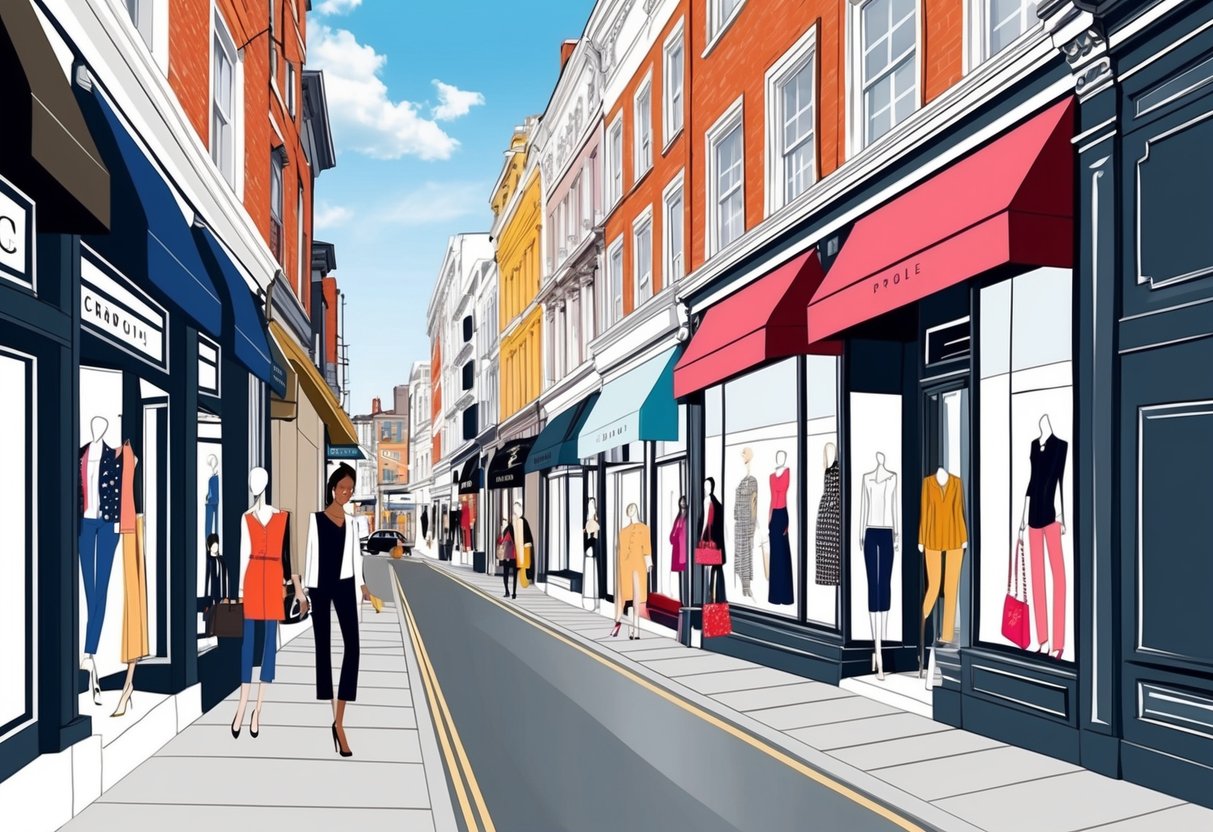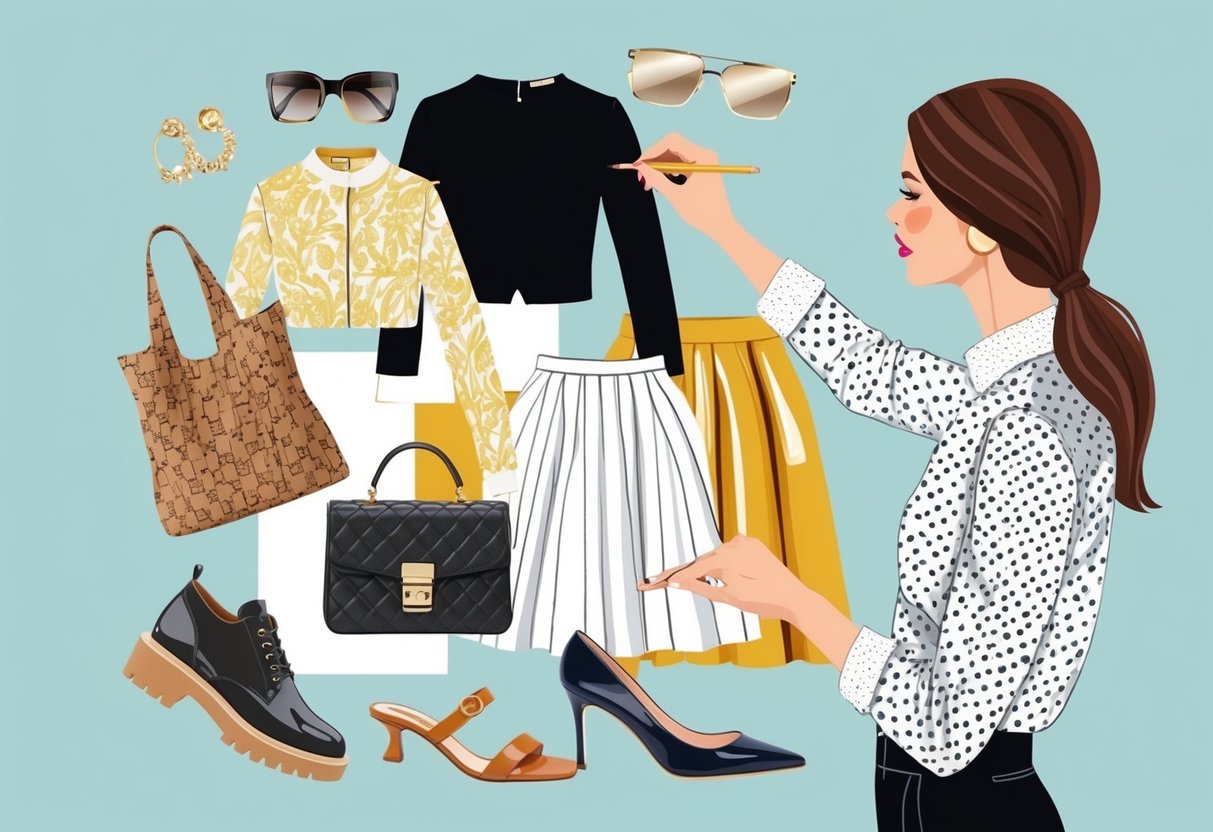
Blending high and low fashion allows anyone to create a distinctive look that highlights their individuality and love for self-expression.
This approach gives fashion enthusiasts the freedom to experiment, break traditional style rules, and showcase their creativity.
People interested in fashion trends often find that mixing investment items like designer bags or tailored jackets with budget-friendly finds gives their wardrobe both versatility and originality.
This practice isn’t just about saving money—it’s about developing a signature style that stands out and feels authentic.
For practical advice on curating a chic, trendy look by balancing statement pieces and everyday essentials, check out this straightforward guide on how to mix high and low fashion.
Understanding High and Low Fashion
Blending high fashion and low fashion invites more creativity and flexibility into personal style.
It allows individuals to pair classic pieces and luxurious items with more affordable, everyday staples for a look that feels both unique and approachable.
Defining High Fashion and Low Fashion
High fashion, sometimes called haute couture, refers to apparel and accessories produced by renowned designers and luxury labels.
These items often feature top-tier materials, fine craftsmanship, and innovative design.
They are known for their elegance, exclusivity, and high cost.
Low fashion, or mass-market fashion, involves readily available and often trend-driven clothes from popular retailers.
These pieces are usually more affordable, making them accessible to a broader segment of society.
They contribute to current trends and rotate quickly through stores as styles shift.
Both high and low fashion play integral roles in shaping the modern wardrobe.
High fashion often sets the tone for seasonal trends, while low fashion ensures that new ideas reach a wider audience at accessible price points.
Key Differences and Overlaps
One of the biggest differences is production scale and quality.
High fashion is limited in quantity and crafted for longevity, using premium fabrics and attention to detail.
Low fashion is produced in large quantities, typically focusing on cost-effectiveness and wearability.
However, the lines can blur.
Many contemporary designers collaborate with fast-fashion brands, making once exclusive designs available to mainstream consumers.
Affordable lines sometimes incorporate elements of elegance and refinement, while luxury designers may reference street style or youth culture.
Even with differing price points and production methods, both are influenced by societal norms and fashion cycles.
What begins as a high fashion trend might later appear in mass-market collections, merging sophistication with practicality.
The Rise of Mix-and-Match Trends
Major fashion capitals and influencers have popularized mixing high and low fashion, creating signature styles that reflect individuality rather than status.
This mix-and-match approach allows for a bold, timeless look that combines statement luxury items with practical basics.
Shifting societal expectations contribute to this trend.
Wearing designer shoes with an affordable dress, for example, is seen as a mark of creativity and authenticity.
Fashion journalists and stylists advocate for investing in a few classic pieces and pairing them with trend-focused, accessible items, as explored in this guide to mixing high and low fashion.
Identifying and Honing Your Personal Style

Personal style is shaped by a mix of signature fashion elements, a focus on what makes someone unique, and embracing one’s individual body type.
By paying attention to these areas, anyone can refine a wardrobe that blends high fashion with accessible pieces in an authentic way.
Recognizing Signature Style Elements
Finding a signature style starts with analyzing the clothing and accessories already worn most often.
Noticing recurring patterns, favored colors, and preferred silhouettes helps pinpoint which pieces deliver confidence and comfort.
Some style enthusiasts rely on a mood board or collection of outfit photos to visualize their core look.
Labels and designers are less important than recognizing why certain items are so appealing.
It’s about understanding the preferences that build consistency over time.
For inspiration, individuals should consider daily environments, lifestyle needs, and favorite looks seen in stores or online.
As style experts emphasize, identifying these key elements will serve as the foundation for integrating new trends while staying true to a personal aesthetic.
Incorporating Unique Features
Every person’s style is influenced by their own unique features, such as height, complexion, or signature accessories.
Highlighting these aspects can set a wardrobe apart from generic trends and establish a memorable impression.
Experimenting with textures, prints, or contrasting styles—such as pairing a luxury handbag with vintage jeans—shows an understanding of how to make each look distinctive.
People may also add personal touches like custom jewelry or embroidered jackets.
To make the process easier, a list can be created to identify what makes a look “you”:
- Signature jewelry or accessories
- Distinct color palettes
- Favorite fabrics or silhouettes
- Special shoes or statement pieces
Mixing these consistent choices creates a visual identity that is recognizable and enduring.
More tips on pinpointing and building a personal wardrobe can be found in this guide to finding your style.
Embracing Individuality and Body Positivity
A signature style thrives on embracing individuality and taking a positive view of one’s own body type.
Dressing for a specific body shape means choosing pieces that highlight strengths and support comfort.
Instead of following restrictive fashion rules, the focus shifts to experimenting with combinations that flatter and feel authentic.
This approach boosts confidence and ensures that style choices serve a person’s unique perspective, rather than external trends or expectations.
Body positivity means celebrating differences and understanding that there is no “ideal” shape or style.
Learning what works personally and adjusting trends to fit one’s lifestyle and preferences is central to authentic self-expression.
More strategies for honing this attitude can be found in this overview on redefining personal style.



